- Description
-
Details
Optical Slit Sheet Precision Pinhole Aperture Small Hole Grating Sheet Through Light Precision Experiment Micro-Diameter Light-shielding Sheet
Product information
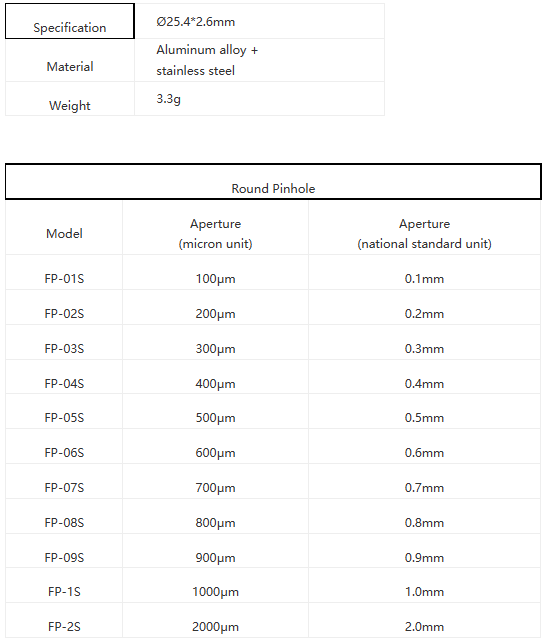
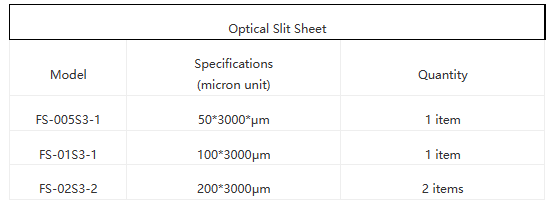
Characteristic
►Slit refers to the slit formed by a pair of partitions on the light path;
►Precision pinholes and slit sheets are used to realize tiny point light sources in the optical path, laser beam filtering, etc.;
►Adjusting the purity and intensity of the incident monochromatic light also directly affects the resolution;
►Compatible with Oeabt multi-series product cage plates/mounts;
►Small hole diameter is optional from Ø0.05~2mm;
►Slit width: 0.05*3mm, 0.1mm*3mm;
Optical knowledge points
Introduction and characteristics of slits:
The slit sheet refers to the gap formed by a pair of partitions in the light path, used to adjust the purity and intensity of incident monochromatic light, and also directly affect the resolution.
The slit is mainly used in spectrometers, etc. According to the working principle of modern spectrometers, spectrometers can be divided into two categories: classic spectrometers and new spectrometers. Classical
spectroscopic instruments are instruments based on the principle of spatial dispersion; new spectroscopic instruments are instruments based on the principle of modulation. Classical spectrometers are all slit spectrometers, and modulation spectrometers are non-spatial spectrometers, which use circular holes to enter the light. According to the spectroscopic principle of the dispersion component, the spectrometer can be divided into: prism spectrometer, diffraction grating spectrometer and interference spectrometer.According to the function of the slit, it can be divided into the entrance slit and the exit slit. The exit incident and the middle slit are important parts of the spectrometer. The main function of the entrance and
exit slits is to control the resolution of the instrument, and the middle slit is mainly used to suppress stray light. For a spectrometer, even if a monochromatic light is used to illuminate the slit, the emitted light always has a spectral distribution with a width of Δυ [also called frequency width].This is mainly caused by factors such as instrument grating, optical system aberration, parts processing and system adjustment, and thus determines the limit resolution of the instrument. In the actual measurement, as the slit width increases, the resolution also decreases linearly, which broadens the spectrum.The width of the exit slit is usually expressed in two ways: one is the actual width of the slit on the metal slit sheet expressed in millimeters, and the other is the spectral bandwidth, which means that the
spectral width of the beam emitted from the exit slit is also expressed in nanometers Said. For example, if the width of the exit slit is 6 mm, it does not mean that the width of the exit slit is 6 mm, but it means that the light emitted from the slit has a spectral bandwidth of 6 mm. Pure monochromatic light is only an ideal situation. The "monochromatic light" that a spectrophotometer can obtain is actually only a band with a certain wavelength range. The wider the slit, the wider the included wavelength range. For the
purity of monochromatic light, the narrower the slit is, the better, but the light intensity is also weaker. Therefore, the slit cannot be infinitely small. The minimum width of the slit depends on the minimum that the detector can accurately measure. Light energy. The minimum width reached so far is 0.1nm.
The corresponding slit should be selected for a specific wavelength, and the slit also affects the resolution.----------------------------------------------------------------------------------------------------
Light double slit interference experiment.
The setup of this experiment is very simple. The light emitted by a point light source is projected on a background board after passing through two slits. When the light passing through the slit reaches the background board, what is
projected is not two light bands, but many light and dark stripes.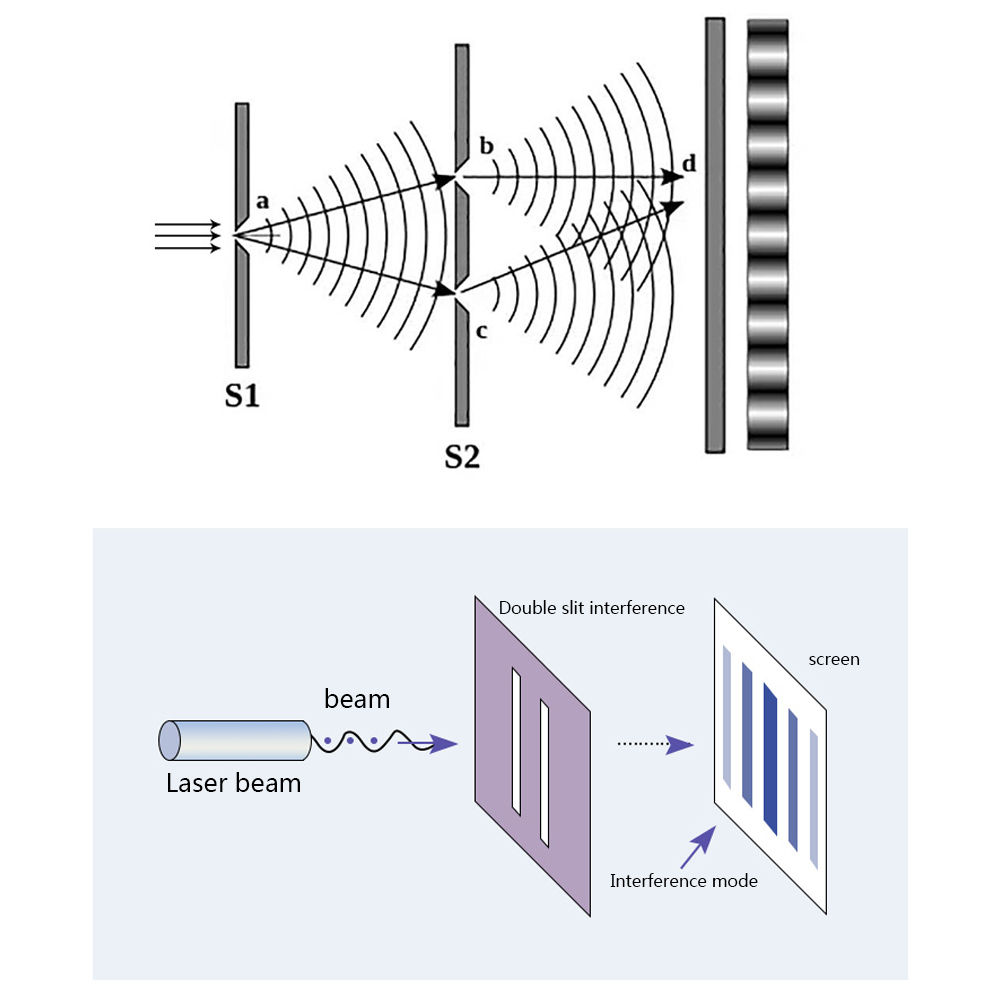
The reason for these light and dark stripes is because light is a wave. When light passes through the two slits, it is equivalent to generating two new waves at the exit of the two slits. These two waves will interfere with each other at different positions on the background plate. At the bright fringe, when two light waves arrive, their crests are just superimposed, and the intensity of the wave increases, so a brighter fringe is produced. At the dark fringe, the peaks and troughs of the two waves just cancel out, and the intensity of the waves weakens, forming a darker fringe.
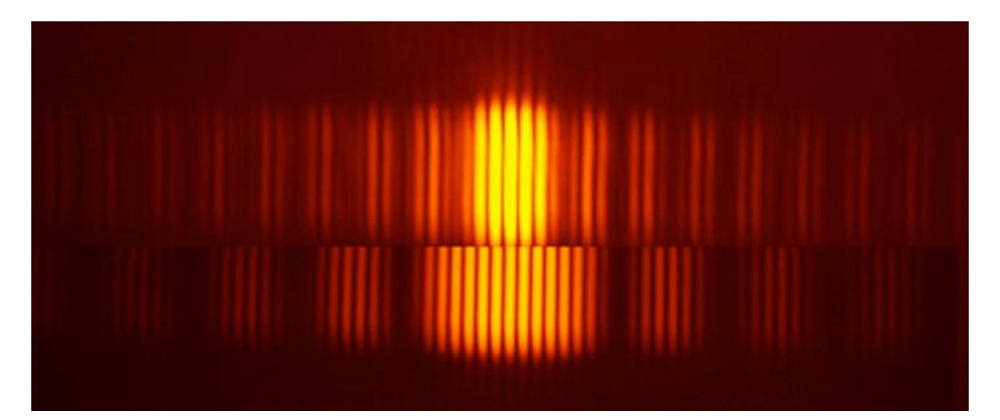
----------------------------------------------------------------------------------------------------
Precision pinhole:
With pinhole filtering, the laser can be condensed into a very small point, so it can be used as a near-ideal point light source to generate spherical waves, which is very useful for optical systems. However, the laser has a high degree of coherence. The dust in the air, the optical components or the laser itself often have some scattered light that will cause interference. Therefore, a small hole must be placed at the convergence point to prevent stray light from passing (such as 10 times If the microscope objective lens is focused, the pinhole diameter is about 25μm) The pinhole acts like a filter in a radio and does not allow light of other spatial frequencies to pass through, so it is called a pinhole filter. There are many uses:
►Spatial filtering;►Control of beam diameter;►Making point light sources;►Image analysis;
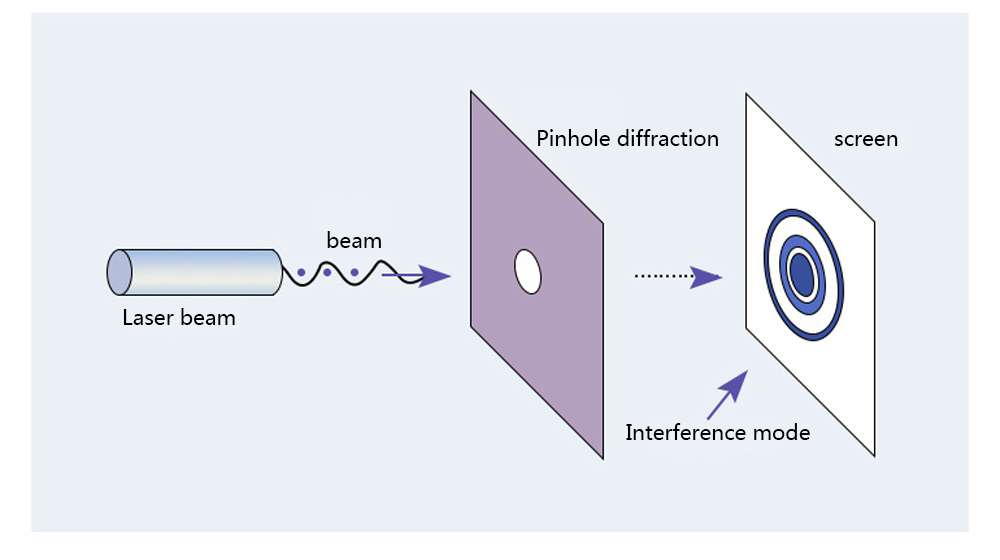
Description
(1)Optical slits are used in spectroscopy instruments, etc. The main purpose is to use pinholes/slits in combination with cage plate mounting brackets, adjustment seats, lens tubes, and microscope objectives to realize tiny stars in the optical path. Point light source, laser beam filtering and other optical experiments.
(2) These optical slits and optical pinholes are installed in the Ø1" cage plate mounting frame, adjustment base, and lens tube, and are compatible with SM1 series products. Choosing the appropriate optical components and pinholes according to your application needs to consider the incident wavelength, beam diameter, and required output beam diameter.
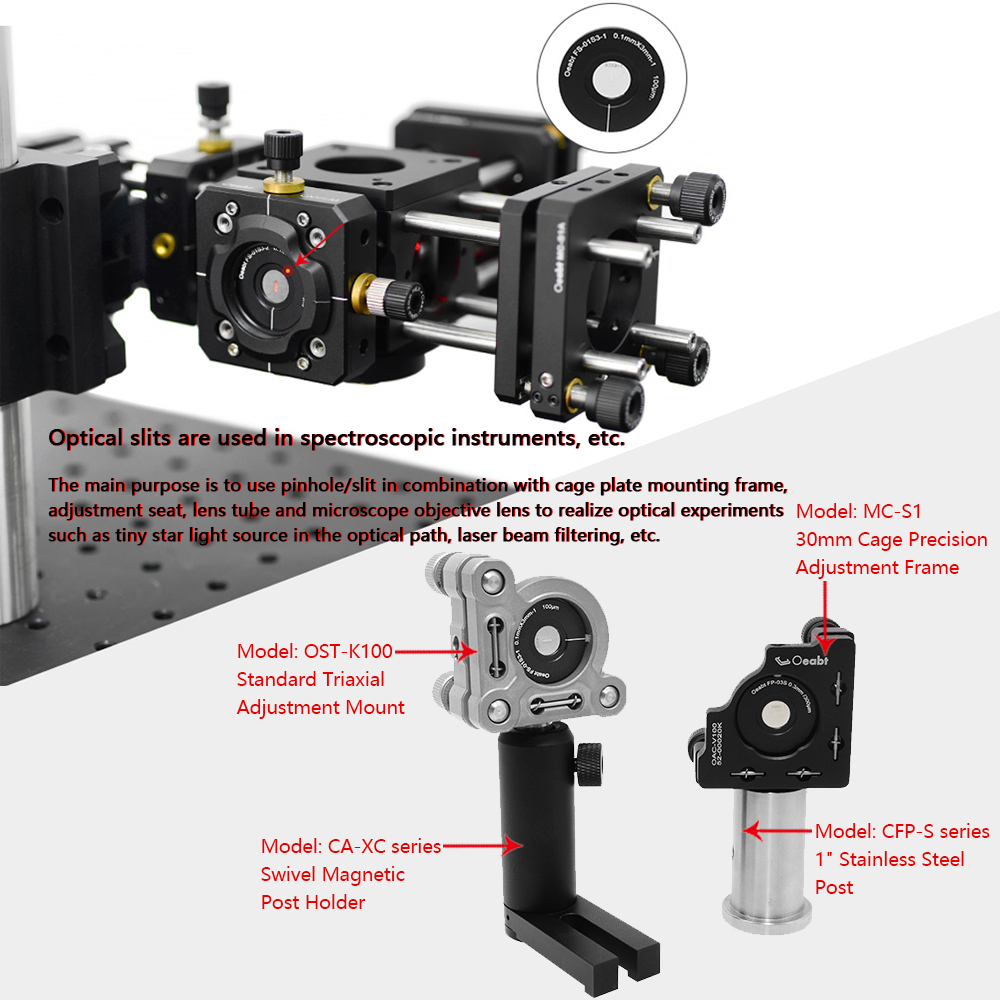
Zoom in on aperture edge details
The pinhole can also be selected according to the actual needs of the size of the aperture
and the size of the outer diameter to meet the different experimental purposes of the user.
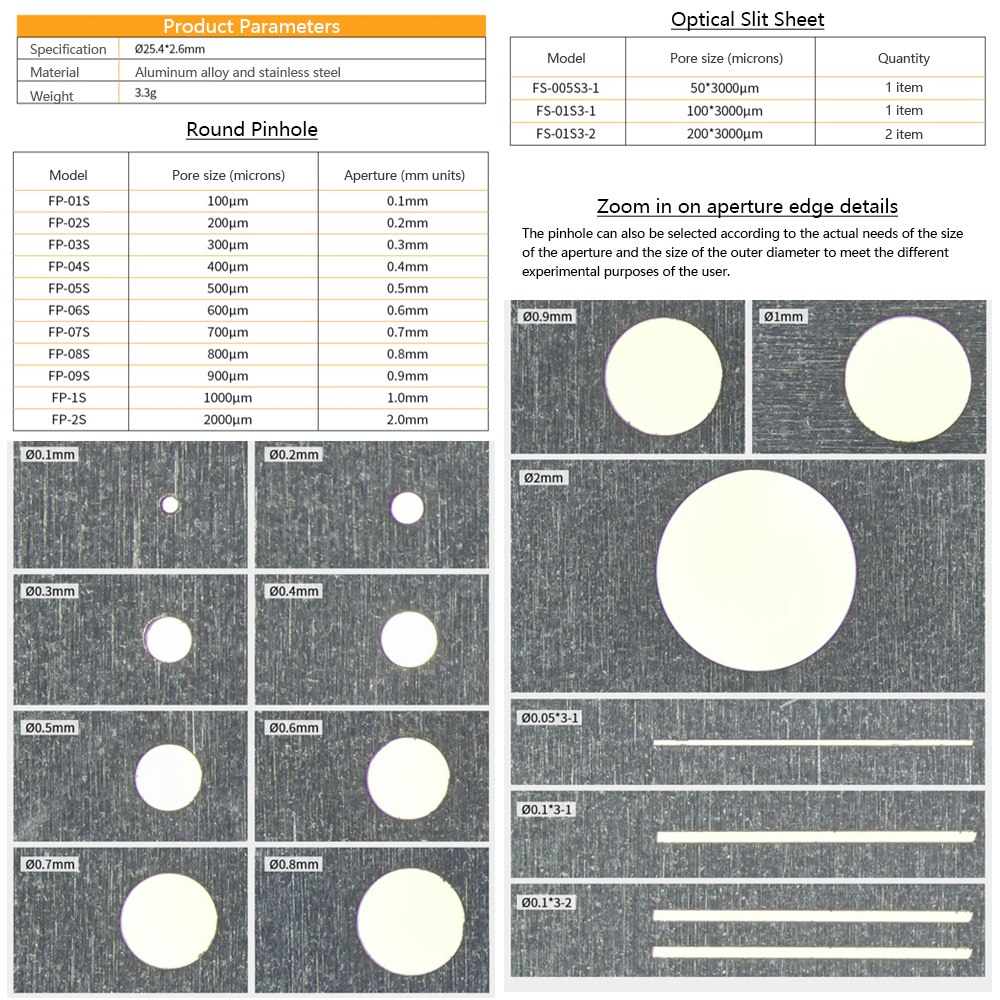
Measurement error: Please allow a small measurement error.
- Additional Information
-
Additional Information
SKU FP-S - Reviews
-

